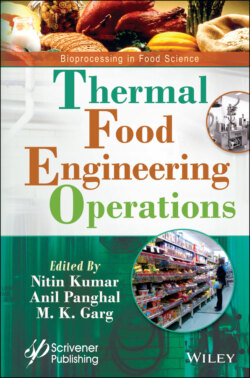Читать книгу Thermal Food Engineering Operations - NITIN KUMAR - Страница 52
2.6.4 Instant Controlled Pressure Drop Technology (DIC) 2.6.4.1 Principle and Mechanism
ОглавлениеThis technique is the thermochemical process which is built on the notion of auto-vaporization and thermodynamics of instantaneity. This concept is introduced by exposing the sample to a short period of saturated steam and then an immediate drop of pressure is applied until it gets into the vacuum. Prominent mechanical stress is applied after the pressure drop which subsequently results in cooling the water promptly and then auto vaporizing it [75]. The DIC technology testifies as a strong and promising system for inactivation and decontamination in food products and works best with the food products with increased surface area contributing to the reduction of log cycle to an estimated level. The efficiency of this technology depends upon the critical factors like expansion property of food, level of vacuum developed, size of the particles, mechanical and thermal stress, microbes variety volatile content, and pressure drop.
This technique alters the cellular structure and component of the microorganisms and this change is also irreversible therefore and dominating process in the food sector for decontamination. The major factor of this mechanism has two main features which are relaxation of pressure and controlled thermomechanical process of the targeted cell of the microbes. The process of the techniques is as follows: exposing the sample to the vacuum stage, homogenizing it, flowed by an instant drop of pressure, and initiation mechanical stress by releasing the atmospheric pressure causing the cell to explode [76]. Not only mechanical stress but also thermal stress is applied which is effective for the inactivation of the microbes. The procedure of auto-vaporization has likewise been stated to generate a mechanical constraint that performs on the focused cell of the microbes especially the walls of the spores. This technique is known for conserving the nutritional content of the specific food products as well as preserving the organoleptic qualities.
